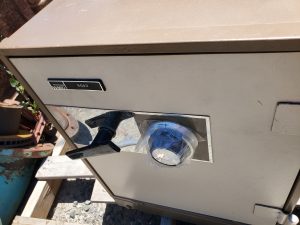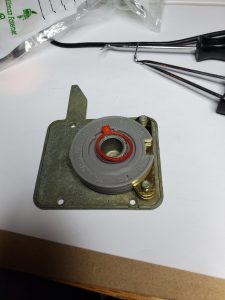RaspberryPi and Safecracking
Two friends both have a safe or two where they don’t know the combination – either the family member that owned it has passed, or they’ve forgotten it. I’ve read about using a Single Board Computer (like a Raspberry Pi) and a stepper motor to manually do the different combinations. I even read about one that used a strain gauge to detect when the wheels engage – meaning it isn’t brute force safe cracking and doesn’t risk wearing out the lock.

While I was researching/contemplating building the device, I happened to see that the local salvage yard had a very old Montgomery Ward Fire Safe. Open, but no combination available. They were trusting enough to let me pull the lock assembly from inside and take it home for the weekend. Thanks to an old YouTube video, I was able to disassemble it and figure out the original combination. (I could have changed it, but the wheels are plastic and likely brittle after all these years. No way to get replacement
parts . . . )
I decided to take my lunch out there today and see what it was like to get it to open once I knew the combination. These ones are different – there’s an extra step or two, but it was very interesting working it with the inner panel off, being able to see how everything works. Yep, I got it working and dropped off the combination with the owner before leaving to get back into the office. I’m also leaning more toward the strain gauge concept after the experimentation it took to get it to work. It is amazing how often you can “feel” a wheel engage. Add in an audio sensor to pick up the key “click” and Bob’s your uncle.

Now I need to resist busting out the scrap 80/20, since I’ve got a few Raspberry Pi SBCs sitting idle, and have a whole box of stepper motors – plus some rare-earth magnets to mount the rig to a safe . . .